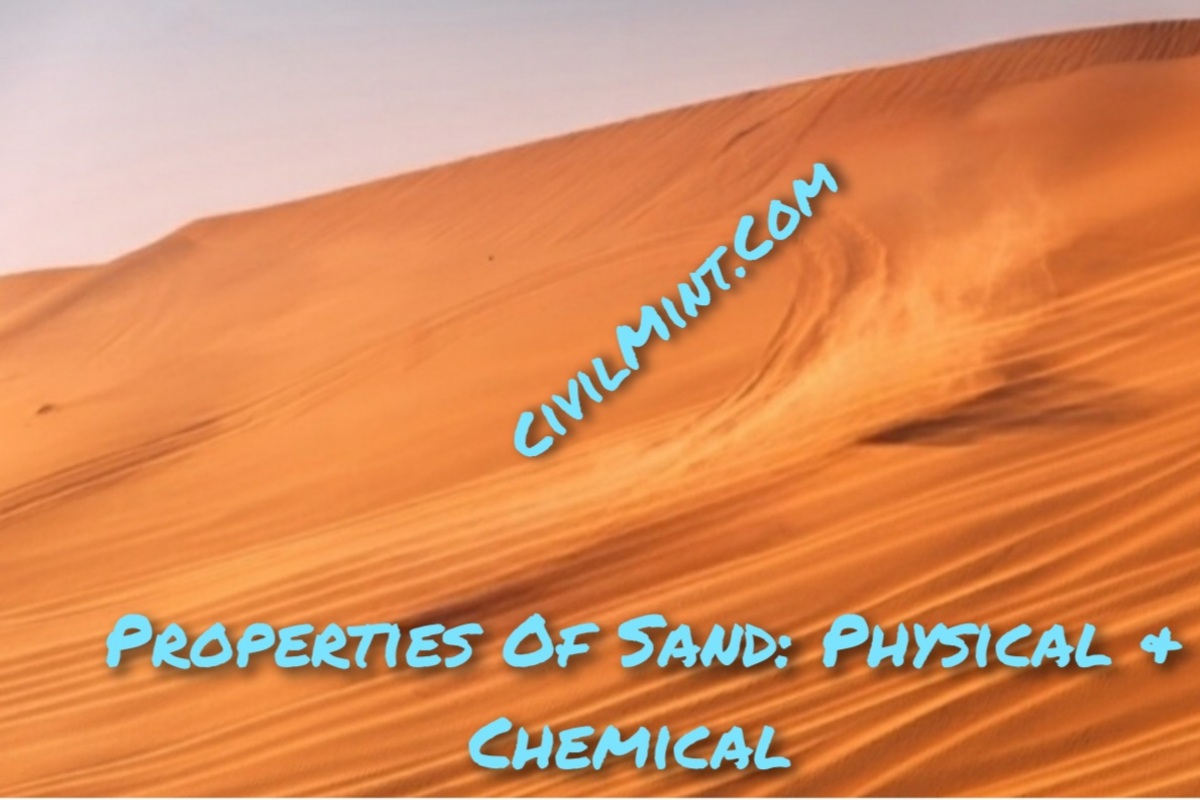In this article you will learn about physical and chemical properties of sand.

Sand is composed of tiny rock fragments and granular materials, and is classified primarily by its size. It is finer than gravel and coarser than silt.
Table of Contents
Physical Properties Of Sand
Sand has certain properties like size, color, weight, and how it behaves.
Sand particles are usually between 0.063 and 2 millimeters in size.
Sand can be different colors like white, grey, brown, or black because of the minerals in it.
Sand is light and has holes in it, which makes it easy for water and air to go through. Sand is also good at letting water go through it, which makes it useful for building things like roads.
Cohesion is another thing that is important when we talk about sand. This means how much the sand sticks together. When sand is dry, it doesn’t stick together very much. But when sand is wet, it can stick together and make shapes.
The angle of repose is the steepest angle that sand can be stacked without it falling over. This depends on how big the particles are, how they are shaped, and how tightly they are packed together.
Chemical Properties Of Sand
The most common mineral present in sand is silica (SiO2), but it may also contain other minerals such as feldspar, mica, and iron oxides.
The chemical composition of sand refers to the types of elements and molecules present in the material. Sand is composed mainly of silica, but the specific mineral content can vary depending on its source. The pH of sand is typically neutral, with a value of 7, although it can fluctuate slightly based on the minerals present.
Sand is generally inert and does not react with other substances. However, certain types of sand may react with acids or bases, making them unsuitable for certain industrial applications. Sand is insoluble in water and most organic solvents, but it can dissolve in hydrofluoric acid or hot concentrated solutions of sodium or potassium hydroxide.
Sand is stable at high temperatures, making it useful in various industrial processes that require heat. However, some minerals present in sand may decompose at very high temperatures. This property can be both beneficial and problematic depending on the intended use of the sand.
Faqs
The melting point of sand is approximately 1700°C (3092°F).
No, sand is not a good insulator. It has a low thermal conductivity, which means that it is a poor conductor of heat, but it is not an effective insulator because it does not trap air pockets well.
